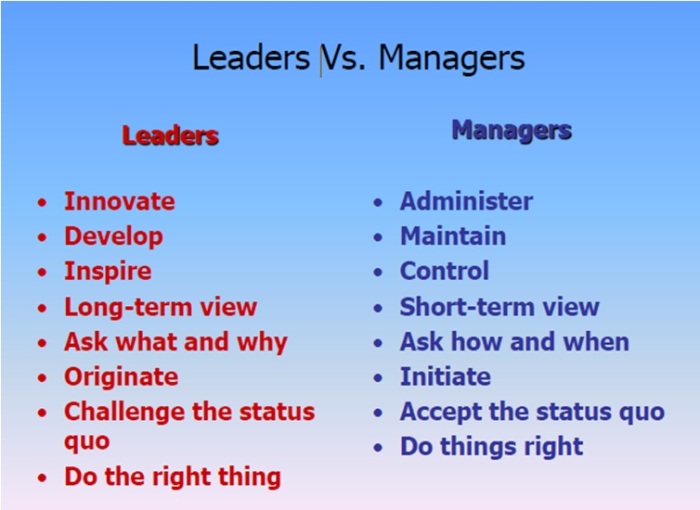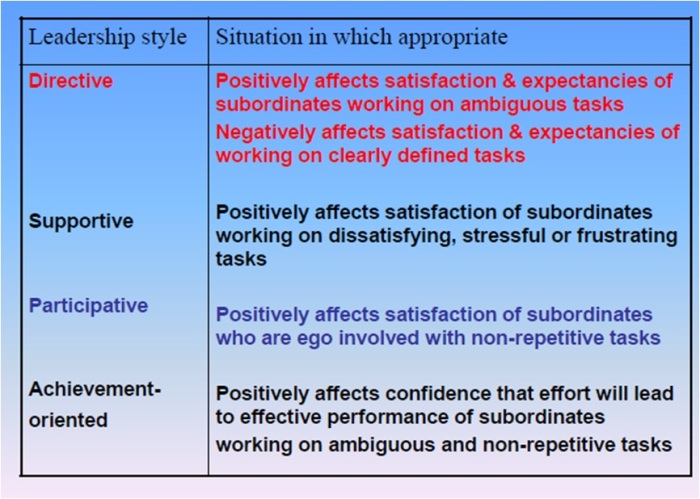LEADERSHIP
- It is the behaviour of an individual when he is directing, influencing the activity of the group towards a shared goal.
- Leadership is the process of encouraging and helping others to work enthusiastically towards objectives
- Leadership is the process of influencing people and providing an environment for them to achieve team or organisational objectives.
Leaders’ Behaviour
Task Behaviours (Initiating Structure)
- Specified roles and tasks
- Plan assignments
- Schedule work
- Set performance standards
- Develop procedures
People Behaviours (Consideration)
- Be friendly
- Be supportive
- Show trust and confidence in subordinates
- Show concern for subordinates’ welfare
- Give recognition to subordinates for their accomplishments
Major qualities of a successful leader
- Emotional stability
- Human relations
- Empathy (Understanding the problems of other individuals & kindness towards others )
- Objectivity
- Motivating skills (self motivation & motivating followers)
- Technical skills
- Communicating skills
- Social skills
Seven leadership competencies
- Drive
- Leadership motivation
- Integrity
- Self-confidence
- Intelligence
- Knowledge of the business
- Emotional intelligence
LEADERS VS MANAGERS
Leadership is doing right things BUT Management is doing things right
STYLES OF LEADERSHIP
Autocratic Leadership: – The leader is the decision maker, determines policies and maintains personal distance from employees.
Participative Leadership -Takes Decision by consultation, group determines policies, democratic.
Free Rein Leadership– Complete delegation of authority in the hands of subordinates. Here the subordinates are well trained & highly knowledgeable.
Autocratic Leadership
–Centralizes power and decision making in himself and exercises complete over the subordinates
–He sets the group goals and structures the work
–determines policies and strategies;
–decides on composition and tasks of work teams;
–personally gives praise and criticism
–maintains personal distance from employees
–Subordinates are compelled to follow the leader‘s directions
Participative Leadership
–Leader practices leadership by consultation
–Decisions are arrived at after consultation with participants
–group determines policies and strategies
–gives technical advice whenever the group needs it
–allows freedom to group members to choose their teams
–tries to be objective in providing rewards and criticism
–participates in discussions
Free-rein Leadership
Avoids power and relinquishes (gives up) the leadership position
Organisation goals have been communicated well and are acceptable to the subordinates
Leader is interested in delegating decision making fully
The subordinates themselves are well trained & highly knowledgeable
Theories of Leadership
TRAIT THEORY OF LEADERSHIP
Leaders have certain traits. They are born & not made. If these traits are identified & measured, organisations can select leaders based on these traits.
BEHAVIORAL THEORY OF LEADERSHIP
It is based on what leaders do & not on what qualities/traits leaders have.
BLAKE & MOUTON’S MANAGERIAL GRID THEORY
Balancing the TASK (concern for production) & PEOPLE (concern for employees) orientation with a 9 grid model
Rally Round the flag Effect
The tendency for followers to make positive attributions about their leaders when they appear to be working to keep things together during crisis situation


